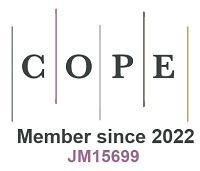REFERENCES
1. Chen, Q.; Wang, X.; Zhou, Y.; et al. Electrocatalytic CO2 reduction to C2+ products in flow cells. Adv. Mater. 2024, 36, e2303902.
2. Lai, W.; Qiao, Y.; Zhang, J.; Lin, Z.; Huang, H. Design strategies for markedly enhancing energy efficiency in the electrocatalytic CO2 reduction reaction. Energy. Environ. Sci. 2022, 15, 3603-29.
3. Li, X.; Yu, J.; Jaroniec, M.; Chen, X. Cocatalysts for selective photoreduction of CO2 into solar fuels. Chem. Rev. 2019, 119, 3962-4179.
4. Lu, M.; Zhang, M.; Liu, J.; et al. Covalent organic framework based functional materials: important catalysts for efficient CO2 utilization. Angew. Chem. Int. Ed. Engl. 2022, 61, e202200003.
5. Ma, W.; He, X.; Wang, W.; Xie, S.; Zhang, Q.; Wang, Y. Electrocatalytic reduction of CO2 and CO to multi-carbon compounds over
6. Xiao, C.; Zhang, J. Architectural design for enhanced C2 product selectivity in electrochemical CO2 reduction using Cu-based catalysts: a review. ACS. Nano. 2021, 15, 7975-8000.
7. Xie, C.; Niu, Z.; Kim, D.; Li, M.; Yang, P. Surface and interface control in nanoparticle catalysis. Chem. Rev. 2020, 120, 1184-249.
8. Yang, P. P.; Gao, M. R. Enrichment of reactants and intermediates for electrocatalytic CO2 reduction. Chem. Soc. Rev. 2023, 52, 4343-80.
9. Zhang, X.; Zhang, Z.; Li, H.; et al. Insight into heterogeneous electrocatalyst design understanding for the reduction of carbon dioxide. Adv. Energy. Mater. 2022, 12, 2201461.
10. Zhang, Z.; Huang, X.; Chen, Z.; et al. Membrane electrode assembly for electrocatalytic CO2 reduction: principle and application. Angew. Chem. Int. Ed. Engl. 2023, 62, e202302789.
11. Guo, L.; Yang, L.; Li, M.; Kuang, L.; Song, Y.; Wang, L. Covalent organic frameworks for fluorescent sensing: recent developments and future challenges. Coord. Chem. Rev. 2021, 440, 213957.
12. Haug, W. K.; Moscarello, E. M.; Wolfson, E. R.; McGrier, P. L. The luminescent and photophysical properties of covalent organic frameworks. Chem. Soc. Rev. 2020, 49, 839-64.
13. Jin, E.; Asada, M.; Xu, Q.; et al. Two-dimensional sp2 carbon-conjugated covalent organic frameworks. Science 2017, 357, 673-6.
14. Li, Z.; Sheng, L.; Wang, H.; et al. Three-dimensional covalent organic framework with ceq topology. J. Am. Chem. Soc. 2021, 143, 92-6.
15. Weng, W.; Guo, J. Chiral covalent organic framework films with enhanced photoelectrical performances. J. Am. Chem. Soc. 2024, 146, 13201-9.
16. Liu, L.; Gong, Y.; Tong, Y.; et al. Imidazole-linked fully conjugated covalent organic framework for high-performance sodium-ion battery. CCS. Chem. 2024, 6, 1255-63.
17. Sun, C.; Sheng, D.; Wang, B.; Feng, X. Covalent organic frameworks for extracting water from air. Angew. Chem. Int. Ed. Engl. 2023, 62, e202303378.
18. Xu, X.; Wu, X.; Xu, K.; Xu, H.; Chen, H.; Huang, N. Pore partition in two-dimensional covalent organic frameworks. Nat. Commun. 2023, 14, 3360.
20. Zhou, T.; Wang, L.; Huang, X.; et al. PEG-stabilized coaxial stacking of two-dimensional covalent organic frameworks for enhanced photocatalytic hydrogen evolution. Nat. Commun. 2021, 12, 3934.
21. Li, Z.; Deng, T.; Ma, S.; et al. Three-component donor-π-acceptor covalent-organic frameworks for boosting photocatalytic hydrogen evolution. J. Am. Chem. Soc. , 2023, 8364-74.
22. Lin, Z.; Liu, S.; Weng, W.; Wang, C.; Guo, J. Photostimulated covalent linkage transformation isomerizing covalent organic frameworks for improved photocatalytic performances. Small 2024, 20, e2307138.
23. Liu, M.; Fu, Y.; Bi, S.; et al. Dimensionally-controlled interlayer spaces of covalent organic frameworks for the oxygen evolution reaction. Chem. Eng. J. 2024, 479, 147682.
24. Zhang, Y.; Zhang, X.; Jiao, L.; Meng, Z.; Jiang, H. L. Conductive covalent organic frameworks of polymetallophthalocyanines as a tunable platform for electrocatalysis. J. Am. Chem. Soc. 2023, 145, 24230-9.
25. Zhu, H. J.; Lu, M.; Wang, Y. R.; et al. Efficient electron transmission in covalent organic framework nanosheets for highly active electrocatalytic carbon dioxide reduction. Nat. Commun. 2020, 11, 497.
26. Pan, Y.; Li, Y.; Nairan, A.; et al. Constructing FeNiPt@C trifunctional catalyst by high spin-induced water oxidation activity for Zn-Air battery and anion exchange membrane water electrolyzer. Adv. Sci. 2024, 11, e2308205.
27. Lin, S.; Diercks, C. S.; Zhang, Y. B.; et al. Covalent organic frameworks comprising cobalt porphyrins for catalytic CO2 reduction in water. Science 2015, 349, 1208-13.
28. Han, B.; Jin, Y.; Chen, B.; et al. Maximizing electroactive sites in a three-dimensional covalent organic framework for significantly improved carbon dioxide reduction electrocatalysis. Angew. Chem. Int. Ed. Engl. 2022, 61, e202114244.
29. Yue, Y.; Cai, P.; Xu, K.; et al. Stable bimetallic polyphthalocyanine covalent organic frameworks as superior electrocatalysts. J. Am. Chem. Soc. 2021, 143, 18052-60.
30. Liu, M.; Xu, Q.; Zeng, G. Ionic covalent organic frameworks in adsorption and catalysis. Angew. Chem. Int. Ed. Engl. 2024, 63, e202404886.
31. Zhang, Q.; Dong, S.; Shao, P.; et al. Covalent organic framework-based porous ionomers for high-performance fuel cells. Science 2022, 378, 181-6.
32. Zhang, M.; Liao, J. P.; Li, R. H.; et al. Green synthesis of bifunctional phthalocyanine-porphyrin cofs in water for efficient electrocatalytic CO2 reduction coupled with methanol oxidation. Natl. Sci. Rev. 2023, 10, nwad226.
33. Song, Y.; Zhang, J. J.; Dou, Y.; et al. Atomically thin, ionic-covalent organic nanosheets for stable, high-performance carbon dioxide electroreduction. Adv. Mater. 2022, 34, e2110496.
34. Baker, C. B. D.; Enache, M.; Küster, K.; et al. Structural transformation of surface-confined porphyrin networks by addition of Co atoms. Chemistry 2021, 27, 12430-6.
35. Yao, N.; Wang, G.; Jia, H.; et al. Intermolecular energy gap-induced formation of high-valent cobalt species in CoOOH surface layer on cobalt sulfides for efficient water oxidation. Angew. Chem. Int. Ed. Engl. 2022, 61, e202117178.
36. Yang, D.; Yu, H.; He, T.; et al. Visible-light-switched electron transfer over single porphyrin-metal atom center for highly selective electroreduction of carbon dioxide. Nat. Commun. 2019, 10, 3844.
37. Huang, Q.; Niu, Q.; Li, X. F.; et al. Demystifying the roles of single metal site and cluster in CO2 reduction via light and electric dual-responsive polyoxometalate-based metal-organic frameworks. Sci. Adv. 2022, 8, eadd5598.
38. Li, N.; Si, D. H.; Wu, Q. J.; Wu, Q.; Huang, Y. B.; Cao, R. Boosting electrocatalytic CO2 reduction with conjugated bimetallic Co/Zn polyphthalocyanine frameworks. CCS. Chem. 2023, 5, 1130-43.
39. Liu, M. Rational design of functional covalent organic frameworks for the oxygen and Carbon Dioxide reduction reactions. PhD thesis, University of Nottingham Ningbo China (UNNC), 2024. Available from: https://research.nottingham.edu.cn/en/studentTheses/rational-design-of-functional-covalent-organic-frameworks-for-the. [Last accessed on 9 Aug 2024]








